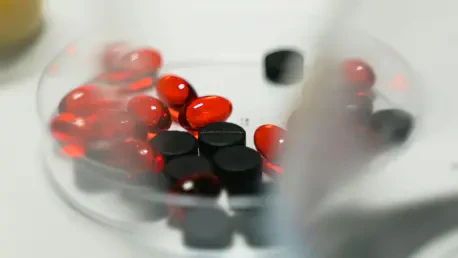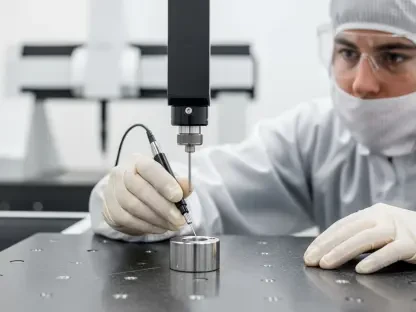In the intricate world of pharmaceutical regulation, a lingering debate continues to challenge industry standards and scientific rationale, particularly around the mandatory testing for alkyl sulfonate ester contaminants in sulfonate-salt drugs across Europe and the UK. These compounds, flagged as potentially mutagenic impurities, have been under scrutiny for over a decade, with regulatory bodies enforcing stringent testing requirements despite growing criticism from experts who question their necessity. While patient safety remains the cornerstone of drug manufacturing, the scientific foundation for these mandates has come under fire, raising broader questions about the balance between caution and evidence-based policy. This discussion not only impacts pharmaceutical companies burdened by compliance costs but also highlights a significant divergence in global regulatory approaches, prompting a deeper look into whether such tests are truly justified or merely a relic of overcautious regulation.
Historical Context of Testing Mandates
The roots of the current testing requirements for alkyl sulfonate esters trace back to a pivotal moment in 2004, when the European Pharmacopoeia introduced guidelines urging manufacturers to evaluate the risk of these impurities forming during the synthesis of sulfonate-salt drugs. This decision was spurred by concerns over potential side reactions in alcohol solvents, a theory brought to light by a French academic. The issue gained further prominence in 2007 after a contamination incident involving Roche’s HIV medication, Viracept, where ethyl methanesulfonate was detected due to a cleaning error in a storage tank. European authorities, including the European Directorate for the Quality of Medicines & HealthCare (EDQM), pointed to this mishap as a rationale for sustained testing protocols. However, many in the industry argue that this was an isolated manufacturing error rather than a systemic flaw, questioning why such a singular event continues to shape broad regulatory policy across the region.
Following this historical backdrop, the debate has evolved into a critique of whether these testing mandates reflect a proportionate response to actual risks. Critics point out that the conditions under which alkyl sulfonate esters could form—highly acidic environments—are rarely present in standard drug synthesis processes, where sulfonic acid is typically neutralized by a basic drug component. The persistence of these requirements, especially when contrasted with the absence of similar rules in regions like the US and Japan, suggests a regulatory stance that may prioritize precaution over practicality. This historical context reveals a policy shaped by past events that might not align with current scientific understanding, leaving pharmaceutical companies to navigate a landscape of compliance that some view as unnecessarily burdensome and disconnected from empirical evidence.
Scientific Arguments Against Routine Testing
Diving into the scientific critique, prominent voices in pharmacotoxicology and pharmaceutical chemistry have challenged the rationale behind mandatory alkyl sulfonate ester testing. Experts such as David Snodin from the UK and Raphael Nudelman from Israel argue that the likelihood of these impurities forming under standard good manufacturing practices (GMP) is negligible. Their research emphasizes that the reaction conditions typically employed—combining sulfonic acid with a basic drug in an alcohol solvent—do not foster the acidic environment necessary for ester formation. Snodin’s published studies underscore this improbability, suggesting that the European and UK pharmacopoeias’ insistence on risk assessments and production statements lacks a robust mechanistic basis. This perspective raises critical questions about whether the resources devoted to these tests could be better directed toward other safety or innovation priorities within the industry.
Beyond the chemical improbability, the argument against routine testing also hinges on the broader implications for pharmaceutical development. The financial and logistical burden of conducting these assessments can strain manufacturers, particularly smaller firms with limited budgets, without delivering a clear benefit to patient safety. Critics contend that regulatory bodies have yet to provide conclusive evidence linking alkyl sulfonate esters to significant health risks under normal production conditions. This gap between policy and proof fuels a call for reassessment, urging authorities to align their requirements with scientific consensus rather than speculative concerns. The disconnect between the perceived threat and the actual risk, as highlighted by these experts, underscores a tension in the industry where regulatory caution may overshadow practical, evidence-driven decision-making.
Global Regulatory Disparities
A striking aspect of this issue is the stark contrast in regulatory approaches across the globe, with Europe and the UK maintaining rigorous testing mandates while other major bodies adopt a more lenient stance. The US Food and Drug Administration (FDA) and Japanese regulatory authorities, for instance, do not impose equivalent obligations on pharmaceutical manufacturers, signaling a lack of international consensus on the severity of the risk posed by alkyl sulfonate esters. This discrepancy creates an uneven playing field for global companies, which must adapt to varying standards depending on the market. It also prompts questions about why European policies remain unchanged despite over a decade of debate and critique from industry stakeholders, reflecting a potential resistance to revisiting long-standing rules in light of new scientific insights.
Adding to the complexity, the silence from key regulatory players like the FDA and the UK’s Medicines and Healthcare Products Regulatory Agency (MHRA) on this matter contrasts with the European Medicines Agency’s (EMA) openness to future dialogue. An EMA spokesperson indicated that industry stakeholders have not recently brought this concern to their annual meetings, though the door remains open for discussion. This fragmented regulatory landscape not only complicates compliance for manufacturers but also highlights a deeper issue of harmonization in global drug safety standards. The lack of alignment suggests that while Europe’s cautionary approach aims to safeguard patients, it may inadvertently hinder efficiency and innovation, diverting focus from more pressing safety concerns that could benefit from unified, evidence-based regulations.
Balancing Caution with Evidence-Based Policy
Looking back at the trajectory of this debate, it’s evident that European authorities leaned heavily on isolated incidents to justify alkyl sulfonate testing requirements, shaping a policy that many experts deem overly conservative. The Viracept contamination of 2007, while a critical lesson in manufacturing oversight, was not reflective of widespread risk, yet it influenced a regulatory framework that persisted without substantial revision. The scientific community, through rigorous analysis, has repeatedly pointed out the improbability of such impurities forming under standard conditions, advocating for a shift toward policies grounded in empirical data. This historical reflection reveals a cautionary tale of how regulatory responses, once enacted, often resist adaptation even as evidence evolves.
Moving forward, the path to resolution lies in fostering open dialogue between regulators and industry experts to reassess the necessity of these testing mandates. A potential step could involve initiating collaborative studies to definitively quantify the risk of alkyl sulfonate ester formation, providing a concrete basis for policy updates. Additionally, harmonizing global standards by learning from regions with less stringent yet equally safe approaches could streamline compliance and redirect resources to more impactful safety measures. Encouraging industry stakeholders to raise this issue at regulatory forums, as suggested by the EMA, might catalyze change, ensuring that patient safety remains paramount without the burden of unsupported testing protocols. This balanced approach could pave the way for a regulatory environment that adapts to scientific progress while maintaining trust in pharmaceutical integrity.









